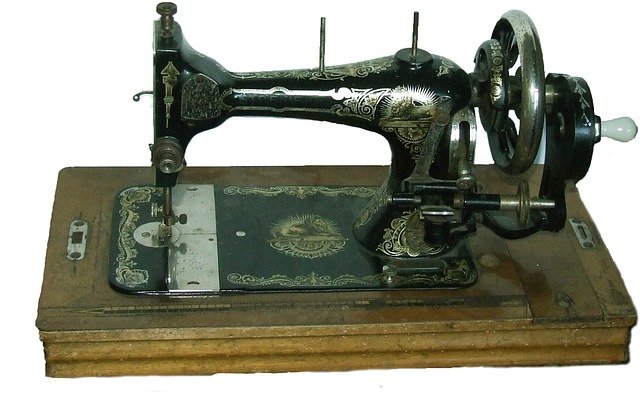By Tim Lambert
Women’s Jobs in the Ancient World
Women’s Jobs in Ancient Egypt
In Ancient Egypt, women had a good deal of freedom. They could come and go as they pleased. They could own property, and they could sign contracts. However, most women worked in the home. There was a great deal of work to do, as most homes were largely self-sufficient. The woman made the family’s clothes and prepared food, such as grinding grain into flour to make bread. In a rich family, the woman was kept busy organizing the slaves.
There were some women doctors in Ancient Egypt. Women also worked as dancers or musicians. Other women were weavers.
In the Bible, the Book of Proverbs describes an ideal wife. The writer says: ‘She considers a field and buys it’. (Obviously, the writer is describing a well-off woman). As well as making clothes for her family, the ideal woman sells clothes to merchants. The ideal woman was industrious.
Women’s Jobs in Ancient Greece
In Ancient Greece, in a rich family, the wife was expected to run the home and, sometimes, to manage the finances. However, rich women would normally stay indoors and send slaves to do the shopping. Poor women, of course, had no choice. They might also have to help their husbands with farm work. Women, even rich ones, were expected to spin and weave cloth and make clothes. In Ancient Greece, some women were tavern keepers. Others sold food or perfume. Some were wool workers.
Women’s Jobs in Ancient Persia
In Ancient Persia, women owned property. Many of them had jobs. Some women were made managers, in charge of both male and female workers.
Women’s Jobs in Rome
Roman women were allowed to own and inherit property, and some ran businesses. (In the New Testament, there is a woman named Lydia who sold purple cloth). In certain trades, some women helped their husbands, especially in luxury trades like perfumery. Furthermore, some women were priestesses or worked as midwives or hairdressers.
Women’s Jobs in the Middle Ages
In the Middle Ages, women spun wool and did cooking and cleaning. Women washed clothes, baked bread, milked cows, fed animals, brewed beer, and collected firewood.
In the Middle Ages, some middle-class women ran their own businesses. In England, the mystic Margery Kempe ran a brewery and later a horse mill, using horses to grind corn. Meanwhile, a famous woman doctor called Trota of Salerno lived about 1100. She wrote about women’s diseases.
In the Middle Ages, some women were spinners, brewers, jewelers, parchment makers, and glovers. In Medieval towns, women often helped their husbands with their work. Sometimes, if a man died, his widow would carry on his trade.
Women’s Jobs 1500-1800
In the 16th and 17th centuries, the professions (teacher, lawyer, doctor) were closed to women. However, some women had jobs. Some of them worked spinning cloth. Women were also milliners, dyers, and embroiderers. There were also washerwomen. Some women worked in food preparation, such as brewers, bakers, or confectioners. Women also sold foodstuffs in the streets. A very common job for women was a domestic servant. Other women were midwives.
In those days, most households in the countryside were largely self-sufficient. A housewife (assisted by her servants if she had any) had to bake her family’s bread and brew their beer (it was not safe to drink water). She was also responsible for curing bacon, salting meat, and making pickles, jellies, and preserves (all of which were essential in an age before fridges and freezers). Very often in the countryside, the housewife also made the family candles and their soap. The Tudor housewife also spun wool and linen.
A farmer’s wife often also milked cows, fed animals, and grew herbs and vegetables. She often kept bees. She also often took goods to market to sell. On top of that, she had to cook, wash the family’s clothes, and clean the house.
The housewife was also supposed to have some knowledge of medicine and be able to treat her family’s illnesses. If she could not, they would go to a wise woman. Only the wealthy could afford a doctor.
Poor and middle-class wives were kept busy, but rich women were not idle either. In a big house, they had to organize and supervise the servants. Also, if her husband was away, the woman usually ran the estate. Very often, a merchant’s wife did his accounts, and if he was traveling, she looked after the business.
Women’s Jobs in the 19th Century
In the 19th century, the Industrial Revolution transformed life in Britain. It changed from a country where most people lived in the countryside and worked in farming to one where most people lived in towns and worked in industry.
In the early 19th century, Britain’s working conditions were often appalling, but parliament passed laws to protect women and children. In 1842, a law banned all women, girls, and boys under 10 from working underground. Then, in 1847, the Factory Act said that women and children could only work 10 hours a day in textile factories. In 1867, the law was extended to all factories. (A factory was defined as a place where more than 50 people were employed in a manufacturing process). An act of 1878 said women in any factory could not work more than 56 hours a week.
In the 19th century, being a domestic servant was a common job for women. Other women worked as charwomen or laundresses. Many women worked at home finishing shirts or shoes. Others made boxes or lace at home. In the Black Country in the West Midlands of England, some women made chains in forges by their homes. In the 19th century, married working-class women often worked – they had to because many families were so poor they needed her earnings as well as her husband’s.

In 1874, the first successful typewriter went on sale, and the telephone was invented in 1876. These two new inventions meant new job opportunities for women.
There were many ‘firsts’ for women in the 19th century. In the USA, the first woman to qualify as a doctor was Elizabeth Blackwell in 1849. In 1859, she became the first woman to have her name entered in the British General Medical Council’s medical register. In Canada, Emily Stowe became the first woman licensed to practice medicine in 1880.
In the USA, Lucy Hobbs Taylor became the first woman to graduate from dental school in 1866. In Britain, the first woman to qualify as a dentist was Lilian Lindsay in 1895.
Meanwhile, in the USA, Louise Weiser became the first woman president of a bank in 1875. A Frenchwoman, Alice Guy-Blache, was the first woman film director. She directed her first film in 1896.
In 1893, Kate Hall became the first female museum curator in Britain. (She was curator of Whitechapel Museum). The first woman to qualify as an architect in Britain was Ethel Charles in 1898.
In the 19th century, Florence Nightingale was a famous nurse and mathematician. In the early 19th century, Elizabeth Fry did much to reform prisons. In the USA, Clara Barton founded the American Red Cross in 1881.
There were also many famous women writers in the 19th century. Among them were Jane Austen, the Brontë Sisters, Elizabeth Gaskell, and George Eliot (Mary Anne Evans).
Meanwhile, during the 19th century, there were gold rushes in North America. Not all gold prospectors were men. Some prospectors were women.
Women’s Jobs in the 20th Century
In 1919, Nancy Astor was elected an MP. She was the first woman MP to take her seat in the House of Commons. In 1929, Margaret Bondfield became the first female cabinet minister. In 1979, Margaret Thatcher became the first female Prime Minister of the UK.
Meanwhile, in 1916, Jeannette Rankin became the first woman elected to Congress (The House of Representatives). Then, in 1922, Rebecca Latimer Felton became the first woman US senator. Then, in 1925, Nellie Tayloe Ross became the first woman governor of a US state (Wyoming).
More occupations were opened to women in the 20th century. In 1910, the first policewoman was appointed in Los Angeles. In Britain, the first policewomen went on duty in 1914.
In 1915, Nora Willis became the first postwoman in Britain. So many men were fighting in the First World War that women were employed.
In Britain, A law of 1919 allowed women to become lawyers, vets, and civil servants. The first woman chartered accountant was Mary Harris Smith in 1920. The first woman solicitor in England was Carrie Morrison in 1922. Also in 1922, Irene Barclay became the first British woman chartered surveyor.
Barbara Mandell became the first woman newsreader on British TV in 1955. In 1958, Hilda Harding became the first woman bank manager in Britain. Rose Heilbron became the first woman recorder in 1956, and Elizabeth Lane became the first female High Court judge in 1965. In 1974, Jill Viner became the first woman licensed to drive a London Transport bus, and in 1976, Mary Langdon became the first woman firefighter in Britain. In 1978, Karen Harrison became the first woman train driver in Britain.
In the USA, Nora Blatch became the first woman to be elected a member of the American Society of Civil Engineers. The first woman electrical engineer in the USA was Edith Clarke. She gained a degree in electrical engineering in 1919.
Meanwhile, in 1937, a law in Britain forbade women and young people under 18 from working more than 9 hours a day in a factory.
In the mid-20th century, most married women did not work outside the home (except in wartime). However, in the 1950s and 1960s, it became much more common for them to do so, at least part-time. New technology in the home made it easier for women to do paid work. Before the 20th century, housework was so time-consuming that married women did not have time to work. At the same time, the economy changed. Manufacturing became less important, and service industries grew to create more opportunities for women.
Technological and economic changes made it inevitable that women would be given the same rights as men. In the USA in 1963, the Equal Pay Act was passed. It compelled employers to pay men and women equal pay for equal work. In the UK in 1970, a similar act was passed. In 1975, a new law in Britain made it illegal to discriminate against women in employment, education, and training. In 1984, another British law stated that equal pay must be given for work of equal value.

My Youtube video about the history of women’s jobs
Last revised 2025